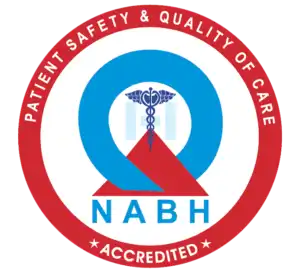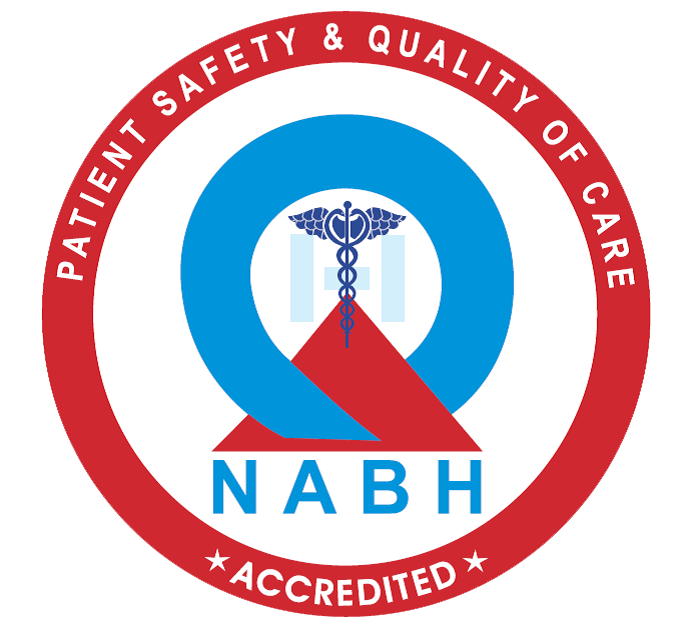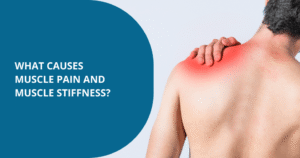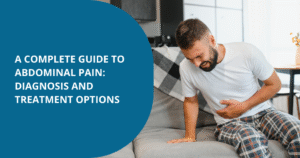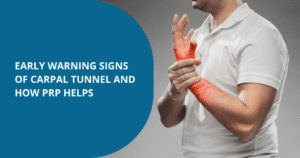Lower back pain (LBP) is a major public health issue affecting daily life and the overall well-being of an estimated 619 million people worldwide. As per WHO, it can hinder movement, impact mental well-being, and cause decreased work productivity and social activities.
Finding effective relief is vital for improving your quality of life. In this blog, discover practical methods on how to relieve back pain, including tailored tips for pregnancy-related discomfort.
Common Causes of Lower Back Pain
Muscle Strain and Poor Posture:
- Most lower back pain occurs from muscle or ligament strain caused by overuse, sudden activity, or lifting something heavy.
- Poor posture while sitting can make back pain worse.
Herniated Discs and Degenerative Conditions:
- The disc between the vertebrae will sometimes bulge, known as a herniated disc, and press on a nerve near the spinal cord causing LBP.
- Degenerative disk disease occurs when spinal cushioning wears down and is common after age 40. Examples are Adult scoliosis and spinal stenosis.
Work-related Strain:
- Prolonged sitting or heavy lifting can contribute to back problems. A proper workstation may help reduce back pain and other injuries.
- If you need to lift squat and use your legs and not your back for support, ask for help or use trolleys when moving heavy objects.
How to Relieve Back Pain: Effective Methods
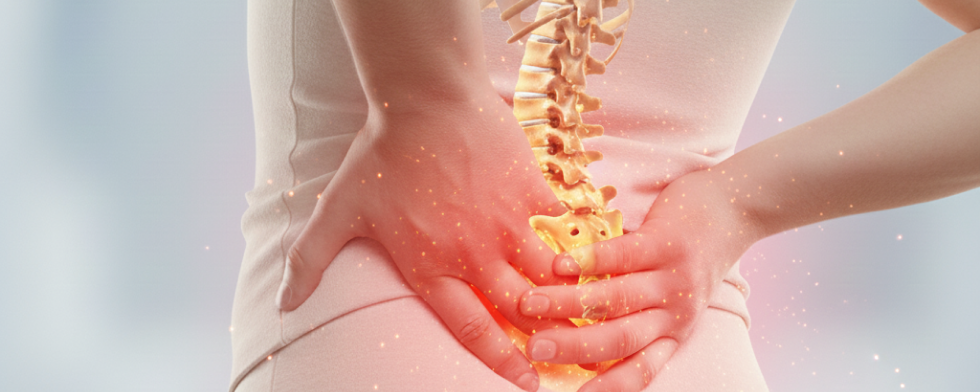
How to ease lower back pain? You can try the following techniques to get relief:
Rest and Ice/Heat Therapy:
- Do not strain much when you have LBP, but limit rest to one or two days; gradually resume gentle movement.
- Use ice for inflammation and heat for muscle relaxation.
Physical Therapy:
- Strengthen core muscles with core-strengthening exercises to support the spine.
- Studies show that strength, flexibility, and endurance improvements reduce pain with time.
Over-the-Counter Pain Relief:
- NSAIDs and analgesics can ease discomfort, but are temporary and can have some side effects. Therefore consulting your practitioner before consumption is advised.
- Applying pain relieving creams containing menthol to the skin can desensitize pain receptors.
Prescription Medications:
- Prescription NSAIDs, opioids, or muscle relaxants may help with pain. Consult your doctor to avoid overdosing, especially if using other medications.
Chiropractic Care and Acupuncture:
- Hands-on treatments like osteopathic manipulation, chiropractic adjustments, acupuncture, or massage therapy can relax muscles, reduce pain, and improve alignment and function.
Also Read: Non-Surgical Treatments for Lower Back Pain: What Works Best?
How to Alleviate Lower Back Pain Without Surgery
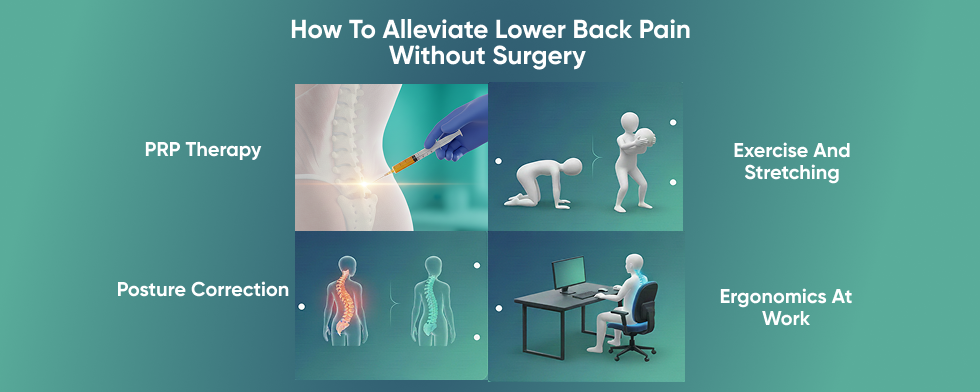
Specialists suggest a few simple techniques for how to treat lower back pain.
PRP Therapy:
- PRP therapy is a non-surgical, minimally invasive treatment and is best for people looking to avoid surgery.
- In this, a small amount of the patient’s blood is processed to isolate platelet-rich plasma, which is then injected into the target area. It breaks down and releases growth factors, compounds that help cells repair and renew.
- Studies show PRP is effective in treating acute and chronic injuries, including bone, muscle, ligament, tendon, cartilage, OA, and nerve damage.
- Its advantages include biocompatibility, safety, affordability, easy preparation, and proven clinical effectiveness.
Exercise and Stretching:
- Studies suggest exercise is key to managing acute and chronic back pain, with resistance (strength) training being the most effective approach.
- Engage in low-impact exercises and stretches to strengthen your core and improve flexibility, reducing strain on the lower back.
- Cat-cow yoga pose helps bring flexibility to your spine, standing stretches, Bridge poses, Standing child’s poses, Lying trunk rotation, etc. are some stretches that may help.
Posture Correction:
- Maintain proper posture while sitting, standing, or lifting to prevent additional stress on your spine.
- An 8-week posture-correcting exercise program significantly relieved back and shoulder pain in participants in a study.
Ergonomics at Work:
- Optimize your workspace with supportive furniture and proper screen height to reduce back strain during long hours.
- Take “movement breaks” in between to avoid muscle stiffness.
Also Read: Lower Back Pain: Causes, Symptoms & Treatment Options
How to Ease Lower Back Pain During Pregnancy
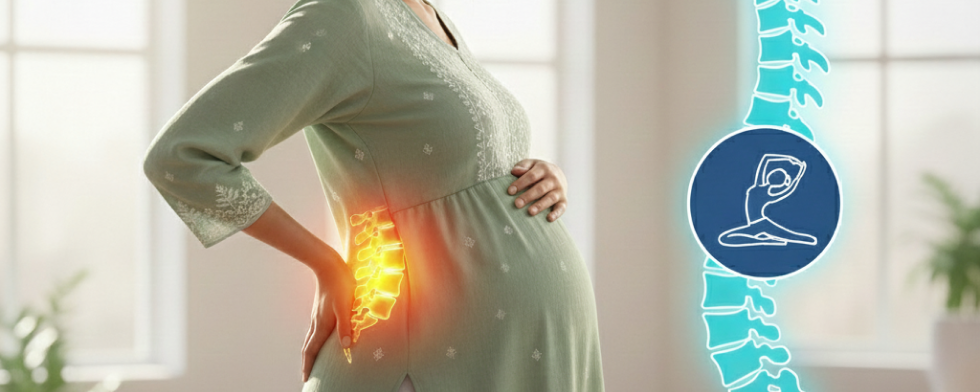
How to relieve lower back pain during pregnancy? Here are some tips!
Safe Exercises:
- Regular physical activity, such as walking, running, or water exercises, can strengthen your back and ease pregnancy-related pain.
- A physical therapist can recommend stretches, like gentle back rounding on hands and knees, or prenatal yoga to provide relief.
Posture and Support:
- Maintain good posture and use supportive chairs to alleviate strain.
- NHS suggests sitting with a straight, supported back using a maternity pillow. Distribute weight evenly between two bags when carrying. While sleeping use a supportive mattress or add a firm board under a soft one.
Maternity Support Belts:
- The best way to relieve lower back pain in pregnant women is to wear a pelvic support belt or an abdominal or pregnancy binder to reduce the strain on back muscles by supporting your stomach’s weight.
Alternative Therapies:
- Consider prenatal massages, usually recommended after the first trimester to relieve LBP.
- Try a complementary therapy only after checking with your healthcare professional.
Conclusion
Lower back pain can significantly impact daily life, but it’s manageable with the right approach. From lifestyle changes and exercise to stress management and tailored treatments, there are numerous ways to address it. Assess your habits, prioritize your well-being, and consult a specialist to create a personalized plan to alleviate lower back pain.
If you’re seeking effective lower back pain treatment in Bangalore, the specialists at Epione are here to guide you. Book your consultation today and take the first step toward a pain-free, healthier future.
Also Read:
- Is Your Job Contributing to Lower Back Pain? How to Identify Occupational Risks
- Lower Back Pain: Causes, Symptoms & Treatment Options
- The Link Between Lower Back Pain and Sciatica
